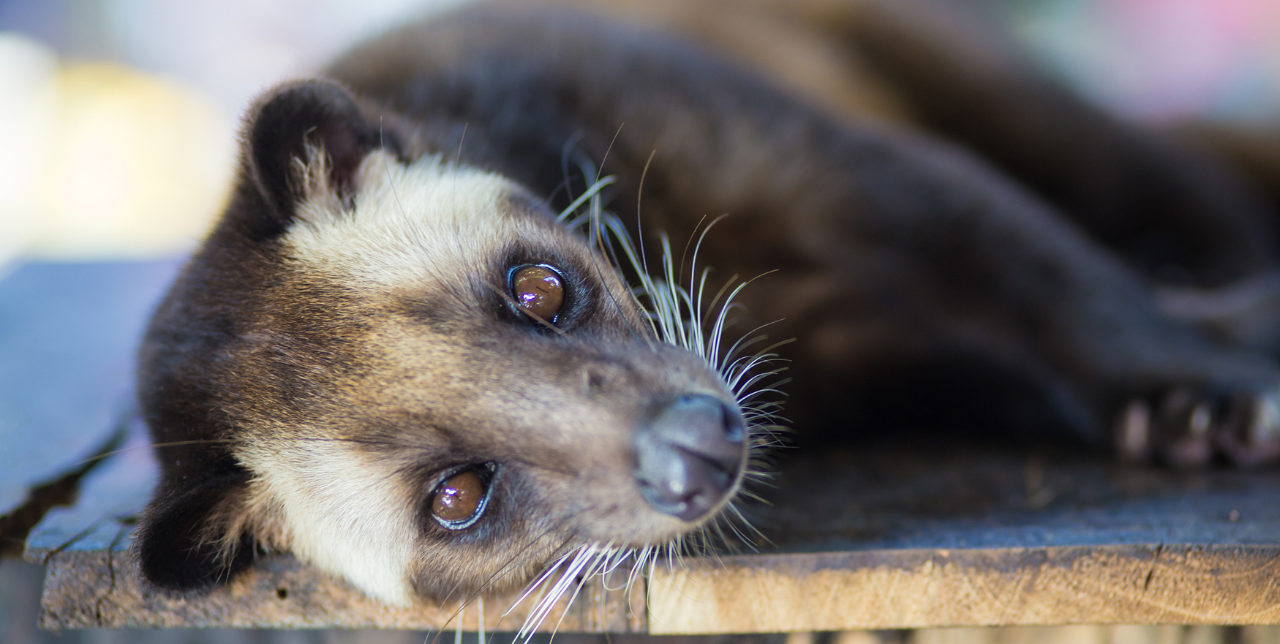The Asian palm civet, a small mammal native to South and Southeast Asia. It plays a unique role in the coffee culture of Indonesia, particularly in the production of Kopi Luwak, the world’s most expensive coffee. In this article we’ll dwelve into its origins, sharing intriguing facts about these creatures. In addition, we will highlight differences from other civet species, and explore their relationship with Kopi Luwak.
Origins of the Asian Palm Civet
The Asian palm civet (Paradoxurus hermaphroditus) thrives in the forests and rural areas of Asia. It’s population extends from India and Sri Lanka to Indonesia and the Philippines. Civets adapt to a wide range of habitats, from tropical rainforests to urban environments. These nocturnal animals have coexisted with humans for centuries, leading to a unique intersection with the coffee industry.
Intriguing Facts About the Asian Palm Civet
- Diverse Diet: Primarily frugivorous, the Asian palm civet’s diet consists of fruits, berries, and occasionally small mammals and insects. Their favorite fruits include coffee cherries, which play a crucial role in the creation of Kopi Luwak.
- Solitary and Nocturnal: These creatures are night owls, spending their days in the safety of tree hollows or dense foliage and foraging alone by night.
- Remarkable Climbers: With strong, flexible bodies and sharp claws, they are adept climbers, navigating the forest canopy with ease.
Kopi Luwak: A Unique Coffee Connection
The Asian palm civet’s unexpected contribution to coffee culture lies in its digestion process. Consuming ripe coffee cherries, the civet’s enzymes ferment the beans during digestion. These are then excreted and harvested to produce Kopi Luwak. As you may already know, this coffee is renowned for its smooth, unique flavor and lack of bitterness, fetching high prices worldwide.
Civets: Diversity Among Species
While the this particular civet is famous for its role in Kopi Luwak production, it’s just one of many civet species. Civets vary in size, habitat, and behavior across species. For example, the African civet (Civettictis civetta) is larger and has a distinct musk used in perfumery, unlike its Asian counterpart. These differences underscore the biological diversity within the civet family and the specific traits that make the Asian palm civet integral to Kopi Luwak.
Asian Palm Civet and Kopi Luwak in Indonesia
In Indonesia, the relationship between the Asian palm civet and Kopi Luwak goes back to the 19th Century. Civets were initially discovered in coffee plantations eating the ripest cherries. Local farmers began collecting the excreted beans, cleaning them, and brewing coffee. This practice evolved into a luxury coffee market, with the Asian palm civet at its heart.
However, the popularity of Kopi Luwak has raised ethical concerns regarding the treatment of civets and sustainable practices. As awareness grows, efforts are increasing to ensure the ethical treatment of Asian palm civets and sustainable production of Kopi Luwak.
In conclusion, the Asian palm civet’s role extends beyond being a curious nocturnal creature. It is a pivotal part of Indonesia’s coffee culture and economy. Understanding these animals and advocating for their ethical treatment ensures the legacy of Kopi Luwak remains positive for both wildlife and coffee enthusiasts.
For more information on the Asian palm civet and Kopi Luwak, visit International Coffee Organization and World Wildlife Fund.

